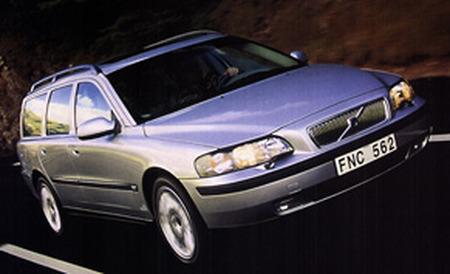Wonder if Linda Tripp has learned yet that beauty is a skin-deep deal? Maybe not, but we sure have — a good example is found in the March 1996 issue, when we pitted an elegant and utterly stylish Audi A6 Quattro wagon ($40,265) and a luxuriously aggressive BMW 525i Touring wagon ($46,201) against a very dowdy-looking Volvo 850 Turbo wagon ($39,423). Which was like putting Rosie O’Donnell up against Ursula Andress in a bikini bake-off, as all Volvo wagons since the ’60s appear to have been designed by a Calvinist with a steady hand and a T-square. But despite this absence of glamour among a very glamorous “après ski” set of pricey wagons, the Volvo won. (The voting of the three driver judges was interesting: Two judged the Volvo to be best, while the third voter ranked it dead last.)
Besides its hopeless looks, the Volvo wagon’s torque steer could be spooky, and the car lacked the structural rigidity of the two Germans. Still, it won for a simple reason: Its exquisite 222-horsepower turbocharged five-cylinder engine made it a kick in the pants to drive. Plus, it was cheaper than the other fancy pants, it had a long list of amenities and features, and you could get more stuff in it. Looks? Some thought its lack of them made the wagon cool.
Then, a few years ago, the 850 got a name change to V70 (the V stands for “versatility,” and why Volvo thinks numerical monikers need changing every five years, we remain clue-free). Now come the all-new V70 wagons that go on sale this spring.
The startling news, as you can see, is the box has disappeared. Volvo has entered the beauty contest it seemed to shun for so long. The V70’s designer, an Englishman named Peter Horbury, who once worked for Chrysler, says he tried to design a wagon with “the front of a sports car and the rear of a van.” True enough, the tailgate retains its vertical stance, a tribute to its hauling function, but there isn’t a hard edge anywhere.
The V70 shares its platform not with the very sporty-looking S70 sedan, but with Volvo’s big flagship S80 four-door luxury car. Beauty doesn’t come without its price. Lop off all the right angles on a brick, and the brick gets smaller. At 185.4 inches long, the base V70 has lost half an inch over its predecessor, although Volvo has added about two inches in girth and height. There are 1.2 more inches of front-seat legroom (from 41.4 to 42.6), although some of that may have been swiped from rear leg space. Still, versatility does not suffer; fold down the rear seats and the front passenger seat, and you can stuff something 9 feet, 3 inches long inside. With the rear seats in place but slid forward to trade a bit of passenger comfort for extra cargo room, there is still 37 cubic feet of space, a hair more than the previous wagon’s. And you’re driving a very sporty car, not a bread van.
The fun emanates from a pair of turbocharged five-cylinder engines (the unblown base motors will join the line later). A 2.4-liter light-pressure turbo (designated the 2.4T) churns out 197 hp at 6000 rpm and 210 pound-feet of torque at 1800 rpm, and a high-pressure turbo motor of 2.3 liters (dubbed the T5) has been cranked up to turn out 242 hp at 5200 rpm and 243 lb-ft at 2400 rpm. Both all-aluminum engines have dual overhead cams, four valves per cylinder, variable valve timing, drive-by-wire throttles, and, paradoxically, a smothered engine note, perhaps because Volvo continues to sell itself as a safety-obsessed family-car maker. Having said that, be apprised that the big-power engine comes standard with a five-speed manual gearbox, a combination that Volvo says will bolt to 60 mph in 6.7 seconds (that’s as quick as a BMW Z3 2.3), topping out at a governed 130 mph. (Our ’96 850T, with 20 fewer horses and a four-speed automatic, ran to 60 mph in 7.2 seconds and kept on running to 144 mph.) The automatic gearbox, called Geartronic, offers manumatic ratio selection.
Inside are some of the most comfy seats on the planet, a Volvo tradition, and the use of leather inlaid with fabric sections kept this driver from sliding about. It’s a wonderfully airy cockpit for a mid-size wagon. Brick-shaped vehicles have broader views of the road, and this one seems hardly compromised by its more slanted windshield. Interior materials are excellent, and the amount of wood in play is not too theatrical. There are four sound systems, and the best, the Dolby Pro Logic Surround setup, is simply magnificent.


Leave a Reply